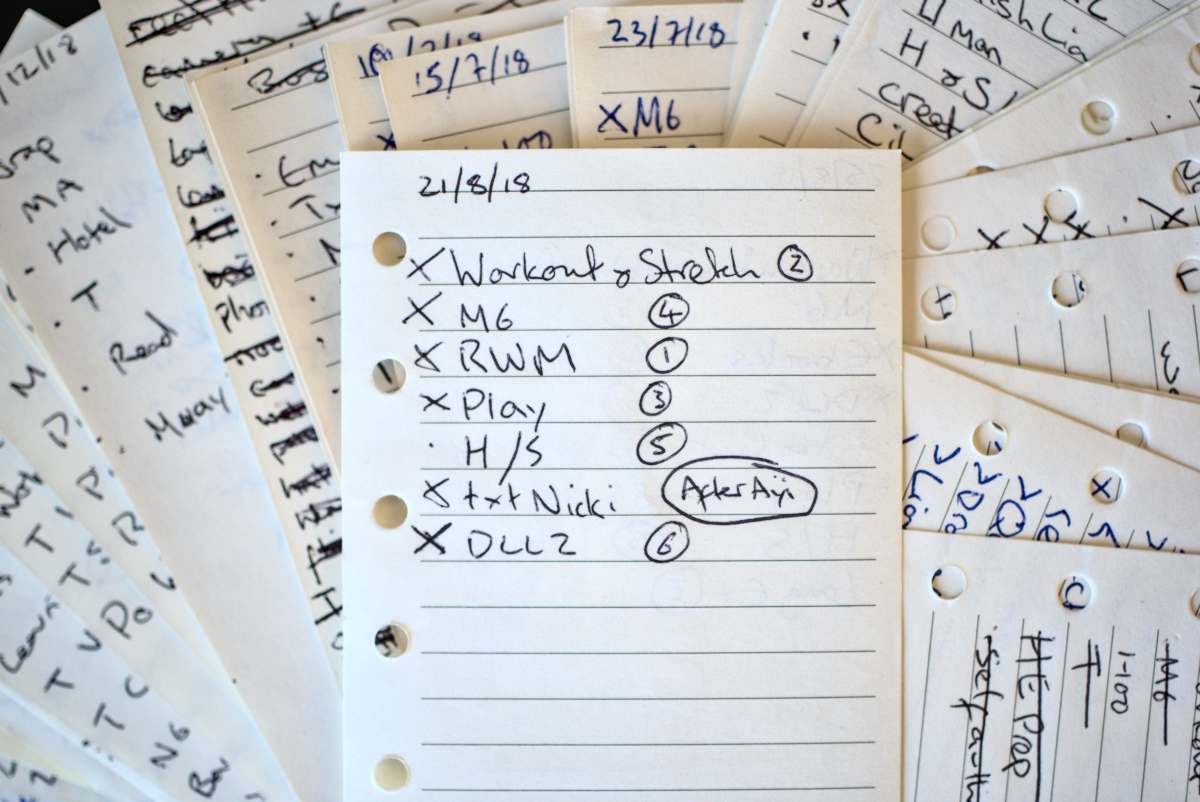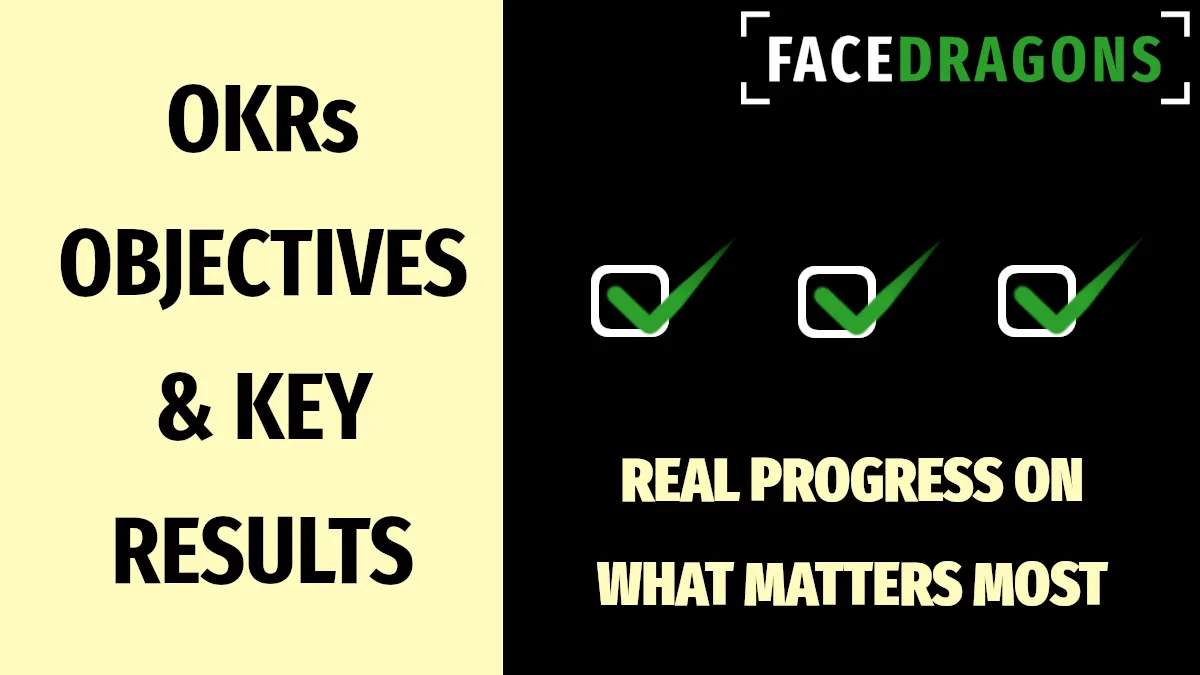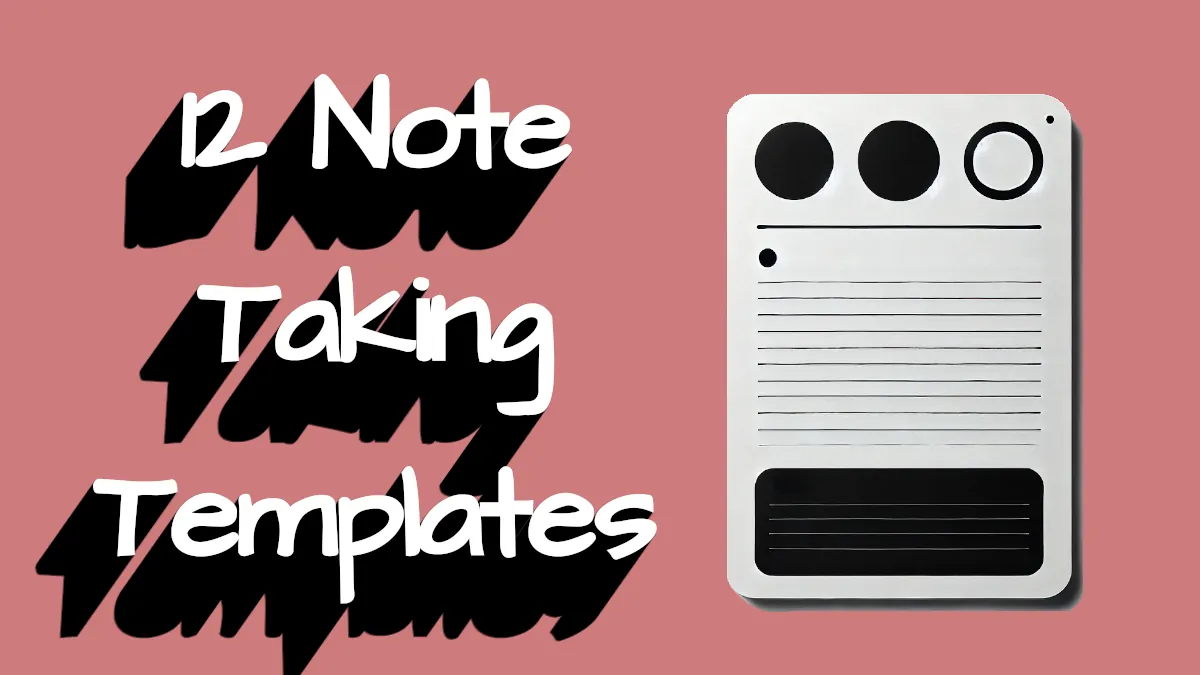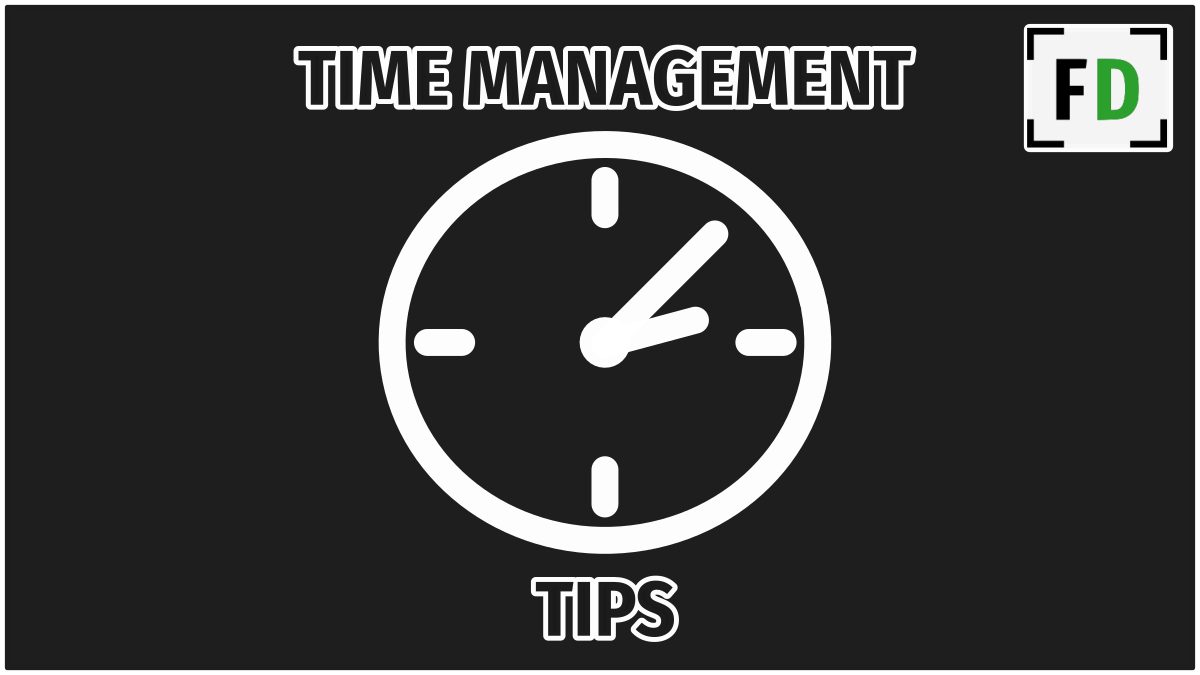A daily todo list is not a recommended practice on GTD, however creating a todo list on GTD can sometimes be useful, especially if GTD is starting to feel stale. Here’s how to create a todo list on GTD. If you’re not on GTD check out this post on creating Daily Todo Lists!
- Add calendared events – these are your must-dos and can be written on your daily todo list with times if relevant.
- Add next actions from relevant contexts – if you’re going to be in the office all day, just look at your @office list.
- Prioritize! – this step is important! Instead of simply creating another checklist for things you need to do, your daily list is a plan for the day. Write a number next to each task which denotes the order you will do them in. By prioritizing them with an order, you don’t need to decide which you will do during the day, just do the next one in order.
Is a Todo List Compatible with GTD?
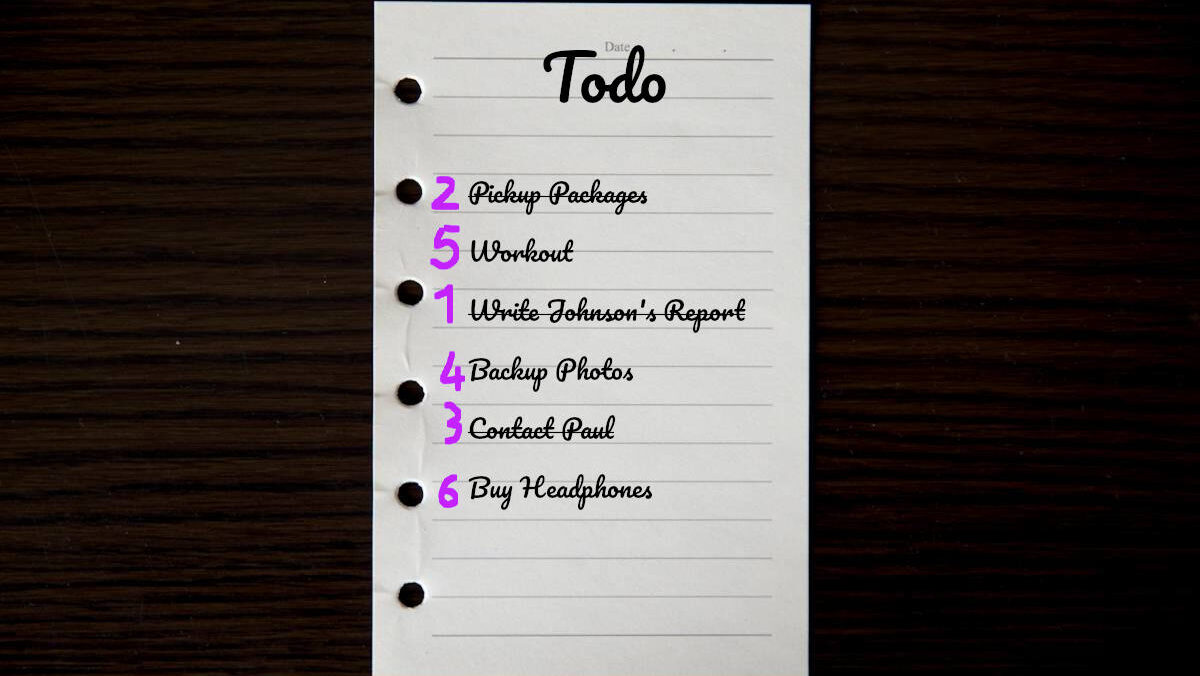
You wake up in the morning, and in the moments of post caffeination that feeling of productivity rises up. So you open up your GTD system and take a look at your next action lists. There’s a few of them and none of them are short. While still fresh you choose one to start first but once the coffee has worn off deciding what to do from your @home context list becomes harder. Maybe you need another coffee?
We’ve all been there, relying on your mind to decide on priority in the moment can be a weak link in the GTD chain. Many practitioners ask, “Can I use a daily todo list with GTD?”
A daily todo list is not something recommended by David Allen in Getting Things Done. According to Allen, you should be working from your next action list, filtered by context if you have discretionary time.
But the idea of a daily todo list is not completely incompatible with GTD. Below I go into the reasons a daily todo list is not recommended for GTD and how to avoid those by creating a daily list that integrates well with your GTD setup.
Why is a daily todo list not recommended for GTD?
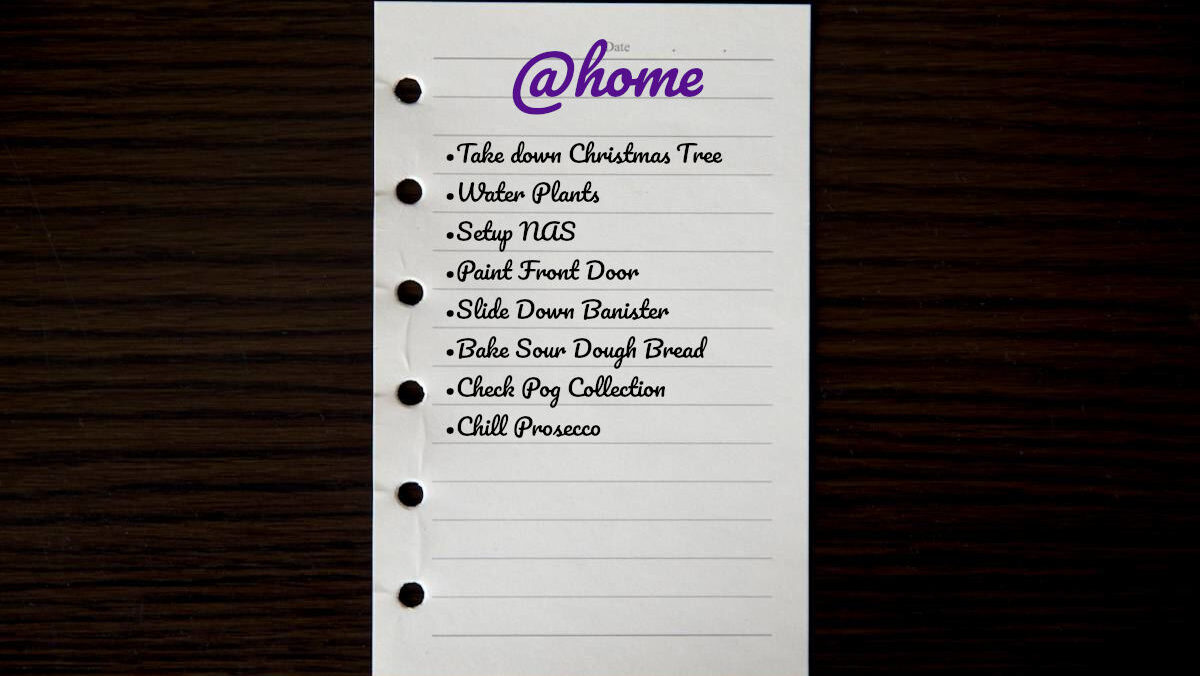
Contexts
GTD breaks down our todos into ‘next actions’ which live on action lists filtered by context such as @home (for all the next actions I can do while at home.) The reason for this is simple, when you’re at home you don’t want to be looking at actions you can only do in the office. Those would be on the @office list.
A daily todo list is not filtered by context, instead it’s only restriction is time i.e. today. Therefore many of the actions on your daily todo list you may not actually be able to do as you are not yet in the correct location for them. Every time you look at the list you have to reassess which you can actually do and which you should just ignore for now.
This can be a cause of resistance for doing tasks on your list.
Time
In GTD, actions on next action lists are no time dependent, they can be done whenever you have free time. Actions that are time dependent go on the calendar, not an action list.
When organized this way, a look at your calendar tells you what you must do that day. During any ‘free’ time you can do actions from your action lists.
Creating a daily list is unnecessarily creating a time restraint on tasks that actually don’t have one. In fact, a daily todo list may contain some tasks that you must do that day and some that could be done any time. Every time you look at the list you will need to remember which are the must-be-done-today tasks and which are the could-be-done-today tasks. This is an unnecessary stress which may cause you to loose trust in the list.
Work as it appears
One benefit of separating out our must-dos (on the calendar) and our can-dos (on action lists) is that we can easily make a decision on new work as it appears.
If your boss tells you to make a report for him by the end of the day, your daily todo list may become instantly meaningless. If you are working from an action list however, you know that you can shelve the tasks and make the report. On the other hand, if you are working from your calendar you might have to tell your boss that you can’t do it.
Work as it appears is more relevant now than ever. When I worked in Beijing I would get up to 400 emails a day, coming in at all times from colleagues all over the world. Many days I got nothing on my action lists done as all I could do was work as it appeared – and that’s OK, if your system can handle it.
On those days having a daily todo list would have just stressed me out, knowing that I wasn’t getting to what I had laid out to do.
Why Using a Daily Todo List Might Save GTD
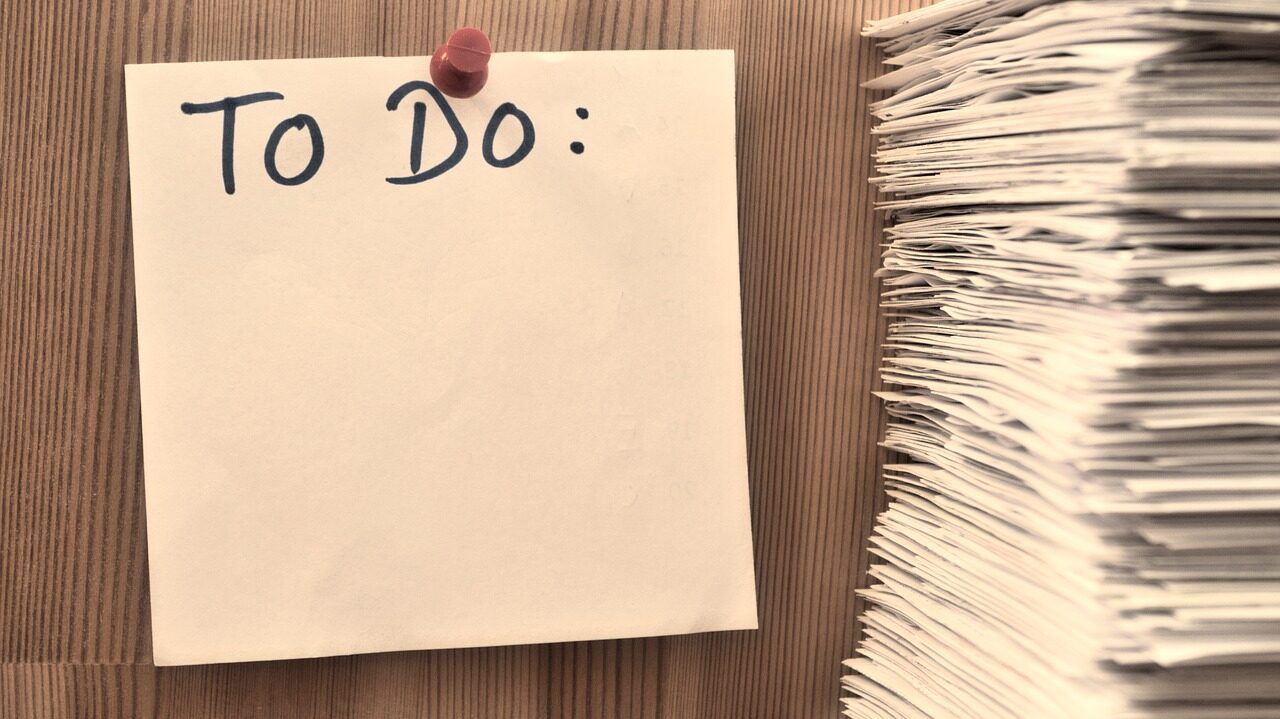
Avoidance
Even with a next action list and well defined next actions, it can be easy to avoid doing the things you’ve decided you need to do. Especially if you have a long list. There is no order or prioritization to the list so you avoid choosing which to do next.
The mindset of “Nothing on my action lists needs to be done now, so why do any of it?” is easy to slip into.
A daily todo list can solve this problem. Listing out a handful of actions from your next action list is really just pre-deciding the order that you will do the actions. Instead of looking at a list of 20+ items and trying to choose one, now you have a list of 5.
Motivation
Everyone likes to see things checked off, in fact the act of checking something off a list actually releases dopamine, the feel good drug. The reason for this is wrapped up with the idea of progress and anticipation.
As you check off more and more from your list, you start to see the end getting closer. The anticipation of completing the list can be very motivating. However in GTD most action lists are being continuously refilled with new tasks. In fact, every day as you sit down to process your recent captures, you are just adding more tasks to your lists.
So regardless of how much you get done, the list is never complete. After a while this can be demoralizing. And in the short term you just don’t get as much of a dopamine hit for checking something off because you there is no anticipation of the completed list.
That loss in anticipation is a loss in motivation but there is an easy cure. Create a daily list from your next actions list and you can instantly benefit from the feelings of motivations that arise from getting close to checking off everything from your list.
Tips
- Put a star next to the must-dos that you pulled from your calendar
- If possible prioritize the calendar items first
- Remember that non-calendar items can be ignored if work as it appears appears
- Keep your next action lists as the master lists, this means all your tasks still go on your action lists first. They are only checked off the action list after they are done and not when they are put on the daily list.
- At the end of the day throw away your daily list even if you didn’t complete it. The tasks will still be on your action lists and tomorrow you can decide which you will add to the daily list anew.

